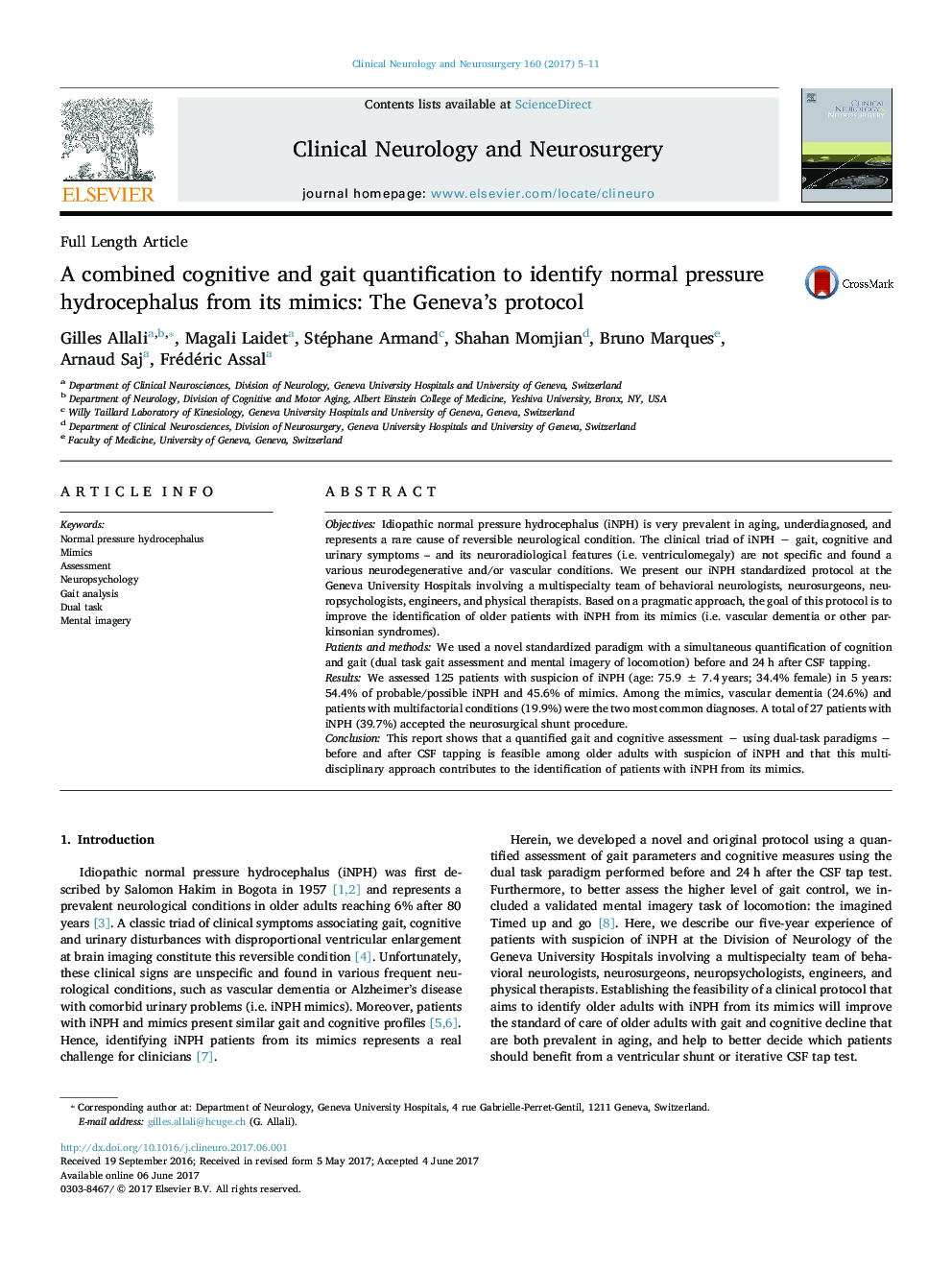| Article ID | Journal | Published Year | Pages | File Type |
|---|---|---|---|---|
| 5626936 | Clinical Neurology and Neurosurgery | 2017 | 7 Pages |
â¢A standardized clinical approach identifies iNPH from its mimics.â¢Mimics are very frequent among patients with suspicion of iNPH.â¢Simultaneous gait and cognitive assessments are feasible in patients with iNPH.
ObjectivesIdiopathic normal pressure hydrocephalus (iNPH) is very prevalent in aging, underdiagnosed, and represents a rare cause of reversible neurological condition. The clinical triad of iNPH â gait, cognitive and urinary symptoms - and its neuroradiological features (i.e. ventriculomegaly) are not specific and found a various neurodegenerative and/or vascular conditions. We present our iNPH standardized protocol at the Geneva University Hospitals involving a multispecialty team of behavioral neurologists, neurosurgeons, neuropsychologists, engineers, and physical therapists. Based on a pragmatic approach, the goal of this protocol is to improve the identification of older patients with iNPH from its mimics (i.e. vascular dementia or other parkinsonian syndromes).Patients and methodsWe used a novel standardized paradigm with a simultaneous quantification of cognition and gait (dual task gait assessment and mental imagery of locomotion) before and 24 h after CSF tapping.ResultsWe assessed 125 patients with suspicion of iNPH (age: 75.9 ± 7.4 years; 34.4% female) in 5 years: 54.4% of probable/possible iNPH and 45.6% of mimics. Among the mimics, vascular dementia (24.6%) and patients with multifactorial conditions (19.9%) were the two most common diagnoses. A total of 27 patients with iNPH (39.7%) accepted the neurosurgical shunt procedure.ConclusionThis report shows that a quantified gait and cognitive assessment â using dual-task paradigms â before and after CSF tapping is feasible among older adults with suspicion of iNPH and that this multidisciplinary approach contributes to the identification of patients with iNPH from its mimics.
